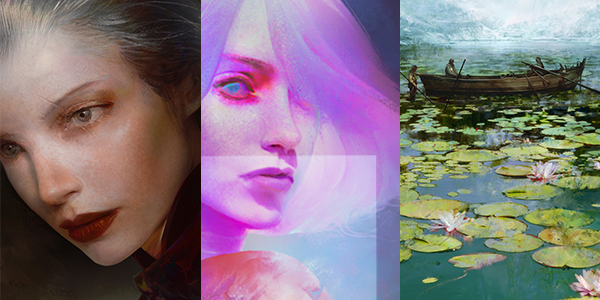54 Mind-Blowing Digital Paintings | Psdtuts+ | Digital painting

Transforming traditional painting techniques into digital art can be a challenging but rewarding process. By leveraging the capabilities of digital tools, artists can create stunning and innovative pieces that push the boundaries of creativity.
One key advantage of digital painting is the ability to experiment with different styles and effects without the constraints of physical mediums. Artists can easily layer and manipulate colors, textures, and brush strokes to achieve unique and dynamic compositions.
Additionally, digital painting allows for greater precision and control over details, enabling artists to create intricate and realistic designs. With tools like pressure-sensitive brushes and customizable settings, artists can achieve a level of accuracy that is difficult to replicate with traditional methods.
Moreover, digital painting offers a range of benefits in terms of workflow and efficiency. Artists can easily undo mistakes, resize elements, and make adjustments on the fly, saving time and resources in the creation process.
Translating Traditional Painting Techniques to Digital Art | | Art Rocket

When transitioning from traditional painting to digital art, it’s important to approach the process with an open mind and a willingness to learn new techniques. While the fundamentals of color theory, composition, and perspective remain the same, digital tools offer a unique set of features and capabilities that can enhance the creative process.
One effective way to translate traditional painting techniques to digital art is to start by familiarizing yourself with the basic tools and functions of digital software. Experimenting with different brushes, effects, and layers can help you understand how to achieve the desired results in a digital environment.
Another tip for transitioning to digital art is to study the work of artists who have successfully made the switch. By analyzing their techniques and workflows, you can gain valuable insights and inspiration for your own projects.
Ultimately, the key to mastering digital art lies in practice and experimentation. Don’t be afraid to make mistakes or try new approaches – creativity thrives on exploration and innovation.
By embracing the possibilities of digital painting and adapting traditional techniques to the digital medium, artists can unlock a world of creative potential and produce truly breathtaking artwork.

Hallo saya hadi wijaya pemilik website ptah-blog.com saya disiningin membagikan informasi seputar teknologi , gadget dll
 ptah-blog.com website yang memberikan informasi seputar teknologi, gadget dll
ptah-blog.com website yang memberikan informasi seputar teknologi, gadget dll



